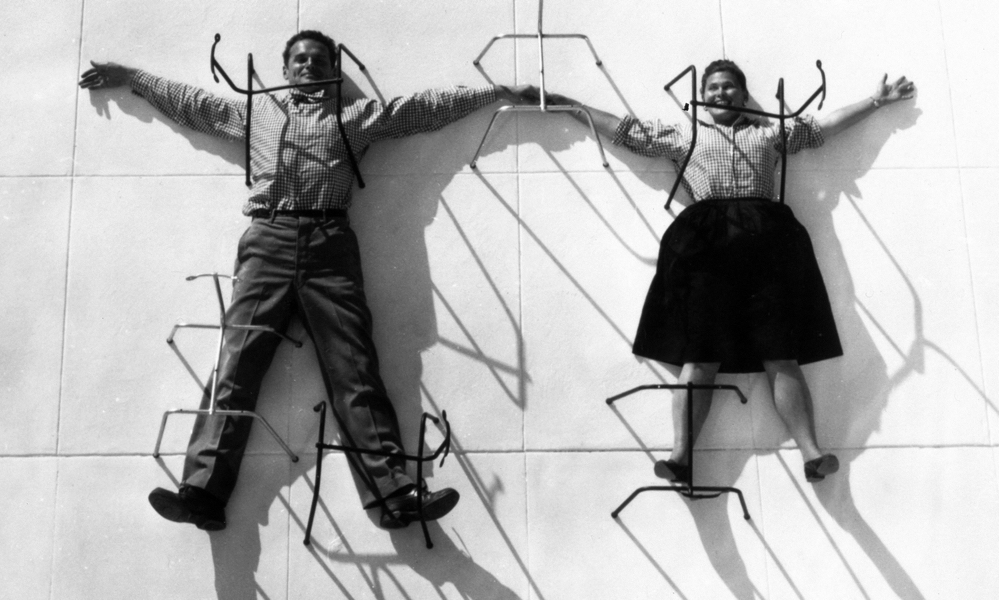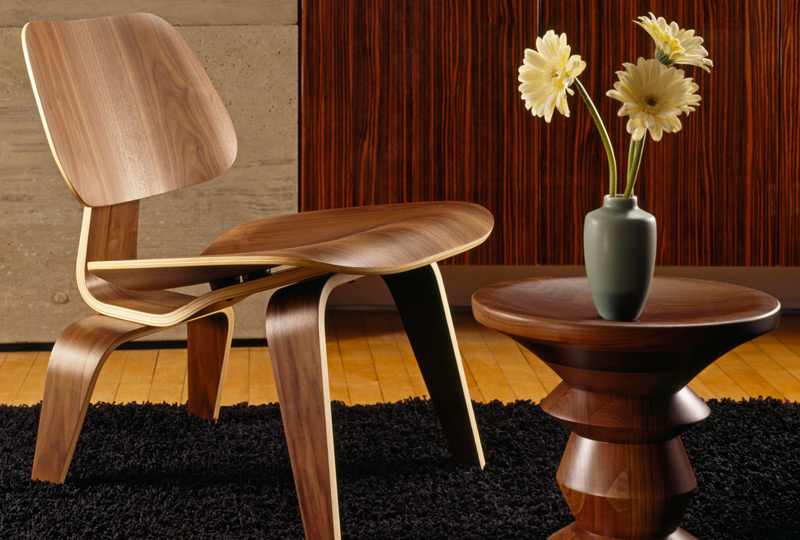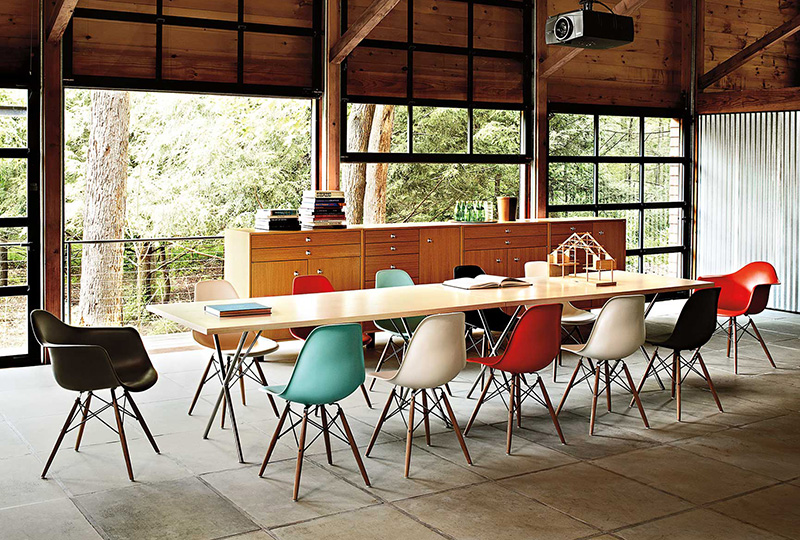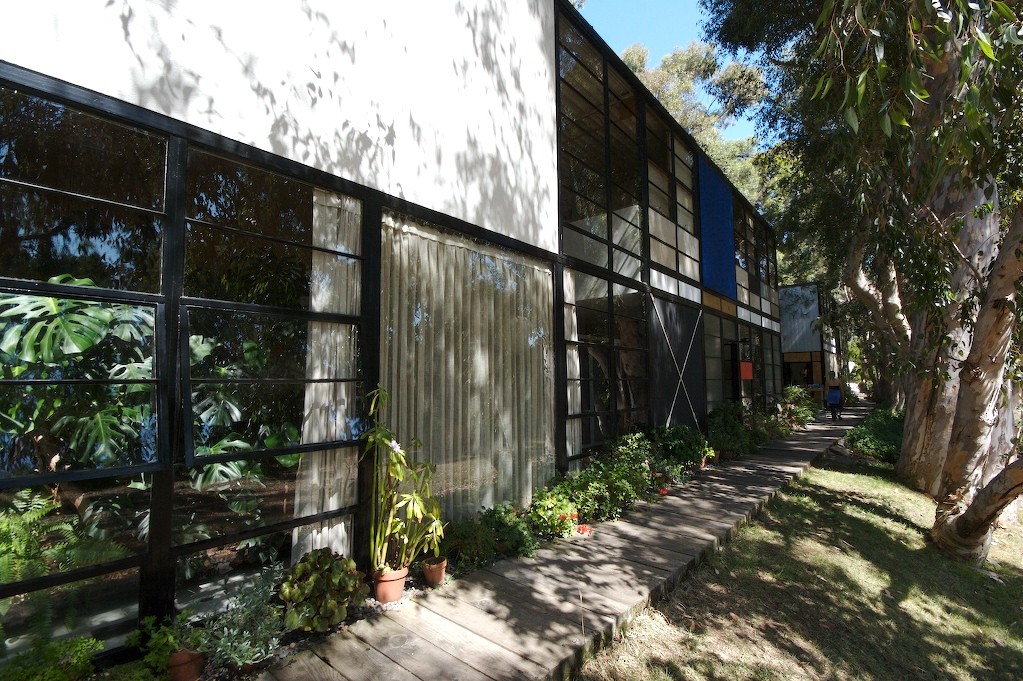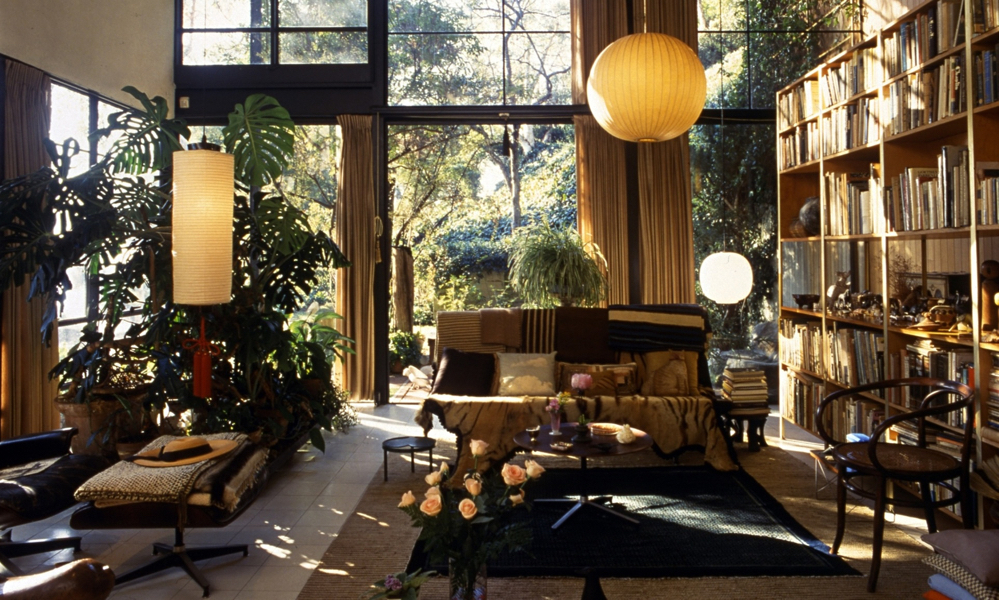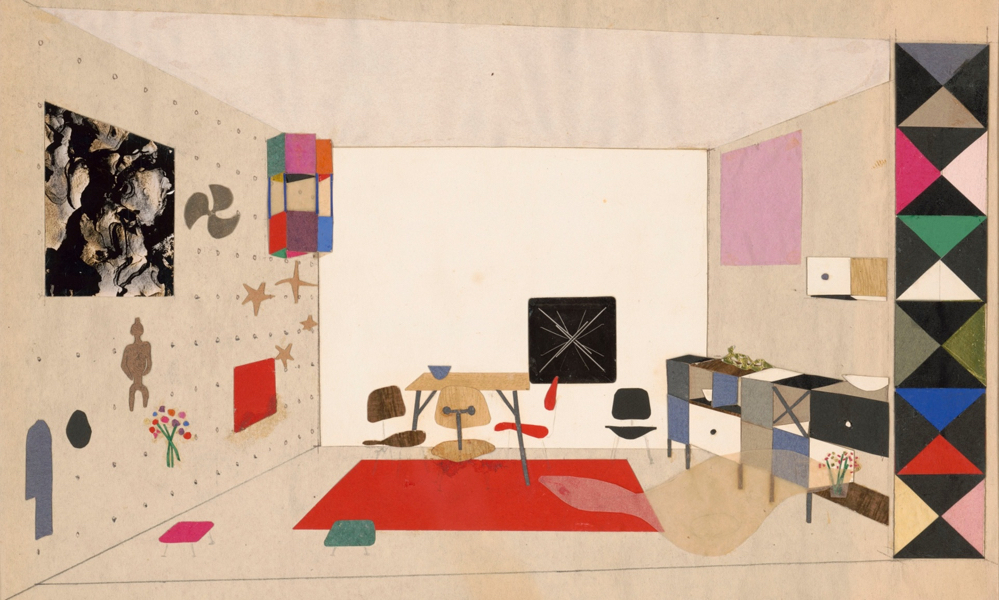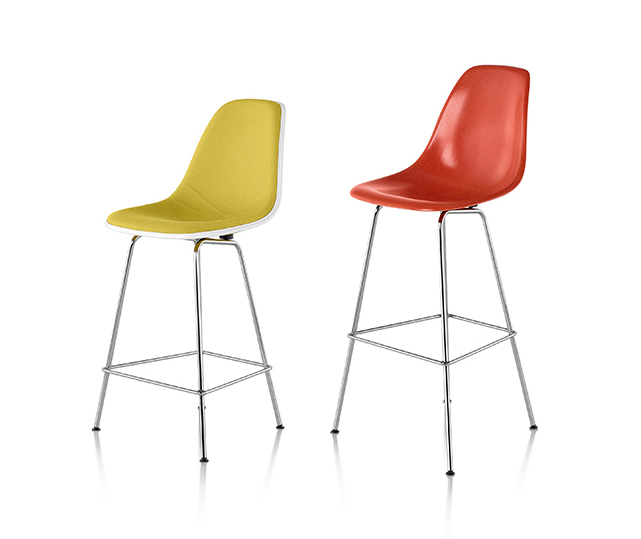With a new Eames retrospective, The World of Charles and Ray Eames, now showing at London’s Barbican until 14 February 2016, the acclaimed husband and wife duo are very much in vogue, their eclectic outputs garnering considerable attention from an ever curious design audience. Though in truth, this heroic pair remain a constant design presence irrespective of exhibitions, compilations and hype. The Barbican’s exhibit looks to be an honest, insightful and multifaceted curation of the Eameses extraordinary catalogue, incorporating their best-loved design pieces, personal insights, the Eames Office and a wide-ranging review of their creative endeavours.
Grounded: Charles and Ray Eames posing with chair bases. Photograph: Eames Office via The Guardian.
In its description of the show, the Barbican notes: “The Eameses embraced the joy of trial and error and approached design as a way of life… [and The World of Charles and Ray Eames]… [brings] their ideas and playful spirit to life.” (Source: Barbican)
Charles & Ray Eames riding a motorcycle in 1948. Image via Vitra.
Plywood Designs
Charles and Ray Eames are without doubt two of the most important and influential American designers of the 20th century. As well as their famed furniture designs, the Eameses contributed to architecture, industrial design, manufacturing, art, film and photography amongst other creative genres. Married in 1941, Charles and Ray were known in those early days for their work in moulded plywood. Indeed they were commissioned by the United States Navy during World War II to manufacture moulded plywood splints and stretchers. With the war’s end, the Eameses and their office returned their focus back to furniture-making and in 1945 created the iconic moulded plywood chair – the LCW. This work would lead to their breakthrough in moulded fiberglass seating.
The Eames Splint. Photograph © 2015 Eames Office, LLC.
LCW. Image © 2015 Herman Miller, Inc.
Eventually everything connects – people, ideas, objects, etc., … the quality of the connections is the key to quality per se.
– Charles Eames
Eames moulded plywood chairs. Image © 2015 Herman Miller, Inc.
Fiberglass Seating
On 5th January 1948 the International Competition for the Design of Low-Cost Furniture, an event held in conjunction with the Museum of Modern Art, opened for submissions. Charles Eames participated in the project, working with a design-research team from the University of California’s Department of Engineering. Charles and the University of California would later be announced as the second prize winner for seating units (the now famous moulded shell chairs). Although the shell chair design was initially steel molded (not fiberglass), it was awarded a prize as a consequence of its innovative and versatile base system and a choice of either arm or side chair formats. Steel moulds were expensive to produce and somewhat impersonal and cold.
Plastic side chair and Eiffel base. Image © 2015 Herman Miller, Inc.
Consequently, Charles worked with the Zenith Plastic Company and the Herman Miller Furniture Company to produce a fiberglass chair. The chair would be manufactured by Herman Miller from 1950. (Source: Eames Office) In 1957, Vitra’s activity as a furniture manufacturer began with the company producing the designs of Charles and Ray Eames.
An image of the Eames moulded plastic armchair from the Museum of Modern Art “Prize Designs for Modern Furniture”. Image © 2015 Eames Office, LLC.
The Eames shell chair is today a worthy design classic. Found in private homes and public venues, in offices, restaurants and bars, its adaptable nature is both sublime and ingenious. Of the many designs created by Charles and Ray Eames, the plastic side chair and Eiffel base is this writer’s favorite.
Eames moulded plastic chairs. Image © 2015 Herman Miller, Inc.
The Eames House
The Eames House. Photograph © Flickr – Stephen Canon via ArchDaily.
The Eameses designed and built their own house as part of the Case Study House Program (sic), a venture driven by John Entenza, the publisher of the one-time Arts & Architecture magazine. In a challenge to the architectural community, the magazine was the client for “a series of homes designed to express man’s life in the modern world [and these] homes were to be built and furnished using materials and techniques derived from the experiences of the Second World War.” (Source: Eames Office) The Eames House – Case Study House 8 – was realised in 1949. Charles and Ray took up residence on Christmas Eve that year and would live there for the rest of their lives. Today The Eames House is a treasured historic landmark.
Grand design: the living room inside the home of Charles and Ray Eames. Photograph: Eames Office via The Guardian.
Creative Genius
Inside story: collage of room display for An Exhibition for Modern Living, 1949. Photograph: Eames Office via The Guardian.
Charles and Ray Eames looked upon design as a way of solving problems and offering the most advantageous solutions. Theirs was a vigorous, honest and original approach, sometimes unconventional and typically avant-garde. They were inventive, playful, even somewhat mischievous. It is these facets of their respective and complementary personalities that add to the creative genius that was Charles and Ray Eames.
In the 1960s, the Eames Office and Herman Miller offered a high chair with a pedestal-columned base that was fixed to the floor. Image © 2015 Eames Office, LLC.
Today, the Eames Office and Herman Miller have created these new bar and counter-height stools. Image © 2015 Eames Office, LLC.
Images © 2015 Eames Office, LLC.
Bibliography
- Eames Office. (2015) Charles and Ray. [Online] Available from: http://www.eamesoffice.com. [Accessed: 20th October 2015].
- Eames Office. (2015) The History of the Eames Molded (sic) Plastic Chairs. [Online] Available from: http://www.eamesoffice.com. [Accessed: 20th October 2015].
